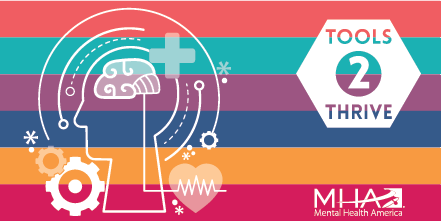Going to the worst-case scenario (aka catastrophic thinking or thinking the worst) is one of the most common thinking traps we fall into. Thinking about the worst-case scenario can help you feel like you’re preparing to protect yourself from getting hurt in the future or to imagine what is the worst thing that can happen so you can reflect and know you can survive—no matter what.
This worksheet comes from Mental Health America’s Mental Health Month 2021 Toolkit.
Here’s a web-friendly version of the activity from the worksheet:
Unfortunately, problems come up when you have worst-case scenario thoughts and you’re not aware of them enough that they control you, instead of you controlling them. This pattern of thinking can result in circular thinking (or ruminating) in ways that pull you into a rut, bring your feelings down, make depression worse, cause you to avoid your responsibilities, and increase anxiety.
Examples of worst-case scenario thoughts:
- If _____ happens, someone will die.
- I will never get better.
- I’m a failure, and no one will love me.
- I can never be happy.
- I’m broken and can never be fixed.
Here are some steps you can take to find healthier thoughts:
- List out any and all worst-case scenario thoughts you find yourself having. Don’t worry about whether it’s “truly” a
worst-case scenario thought… If it’s bothering you and you want to jot it down, jot it down. - Look at the thoughts from Step 1. Pick 3 that stand out that you want to address. Write those down too.
- Question each thought by exploring the following questions:
- Are you sure the thought is true or will happen?
- Is there any evidence it is true?
- Is there evidence that it is not true?
- Is the thought more rooted in your feelings or reality?
- If it is reality, are you able to cope with it? Have you coped with it before?
- Looking at the three thoughts above, what do you need to say to yourself or how can you change the above thoughts so that you feel better instead of worse? These are called “reframed thoughts.”
- Write your reframed thoughts on paper or post its and put them where you are most likely to struggle with worst-case scenario thinking. Examples include by your bed, in the bathroom, in your car, on your phone, or in a journal.
- You can also check out our online activity, Overcoming Negative Thoughts.
"*" indicates required fields
"*" indicates required fields
"*" indicates required fields
"*" indicates required fields

